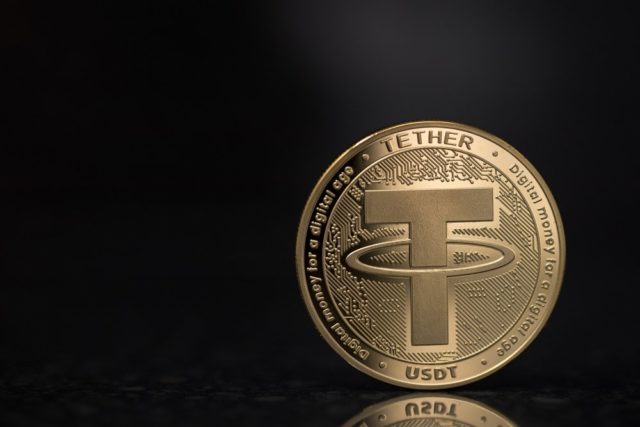- The Reserve Bank of New Zealand will keep its key interest rate at 5.50% on Wednesday.
- The August policy decision appears to be a “tight choice” between holding and cutting as inflation expectations fall.
- The fate of the New Zealand dollar depends on RBNZ policy action, updated forecasts and Governor Orr’s words.
Market participants are eagerly awaiting the Reserve Bank of New Zealand’s (RBNZ) interest rate decision, due to be announced on Wednesday at 02:00 GMT, as it is expected to be a “tight decision” for the central bank.
The RBNZ is expected to keep the Official Cash Rate (OCR) at 5.50%, holding that level from May 2023. However, the market is sharply divided, with analysts and industry experts anticipating a decision to hold rates. A Reuters poll of 31 analysts found 12 predicting a cut while the rest support the status quo.
On the other hand, swap markets imply a roughly 70% chance that the bank will cut the cash rate by 25 basis points (bps) to 5.25%. Markets are pricing in a 90 bps reduction this year and another 148 bps in 2025.
What to expect from the RBNZ interest rate decision?
Markets were tilted in favour of a dovish shift in RBNZ policy after the central bank’s quarterly survey showed a continued decline in inflation expectations.
New Zealand inflation expectations fell to a three-year low of 2.03% in the third quarter, compared with 2.33% in the June quarter. Meanwhile, data from the survey of 33 business leaders and professional forecasters saw annual price increases averaging 2.40% in the year ahead, down from 2.73% previously.
However, some of the other economic indicators suggest that the RBNZ could extend the pause. Non-tradable inflation remains a concern for the central bank, with domestic inflation remaining stubbornly high. Non-tradable inflation was 5.4% in the year to the June quarter, slowing from 5.8% in the second quarter, though still above the 5.0% level.
The country’s labor market still showed some signs of tightness after the Employment Change rebounded 0.4% in the second quarter, from a 0.2% drop in the first quarter and well above the market estimate of a 0.2% decline. The Unemployment Rate rose to 4.6% from 4.4%, below the expected figure of 4.7%.
Additionally, New Zealand’s ANZ Business Confidence Index jumped to 27.1 in July from 6.1 in June, showing an improvement in business morale.
As the market remains divided over the RBNZ’s likely policy move this week, traders will be paying close attention to the language of the Monetary Policy Statement (MPS) and updated economic projections for fresh clues on the bank’s outlook on interest rates.
How will the RBNZ rate decision impact the New Zealand dollar?
The main focus will be on the RBNZ’s OCR forecasts and a downward revision to the OCR for this year could reverberate market expectations of an earlier-than-previously-projected RBNZ rate cut in Q3 2025. The RBNZ currently sees the OCR peaking at 5.65% in Q4 2024.
The New Zealand Dollar (NZD) will be thrown under the bus if the central bank cuts the rate by 25 bps to 5.25% while revising down its OCR forecast for 2024. In such a scenario, NZD/USD could revisit the nine-month low of 0.5900.
Should the central bank maintain the rate, any dovish adjustment in the policy statement and a possible downward revision of the OCR projections could overshadow and act as a headwind for the New Zealand dollar.
NZD/USD could extend its recovery momentum only if the MPS expresses concerns over persistent non-traded goods and services inflation and acknowledges upside risks to inflation, delivering a hawkish hold outcome. The New Zealand dollar could also benefit if the bank maintains its hawkish bias while maintaining OCR estimates.
Dhwani Mehta, Senior Analyst at FXStreet, provides a brief technical outlook for trading the New Zealand Dollar ahead of the RBNZ policy announcements: “The NZD/USD pair is consolidating last week’s recovery, capitalizing on a bullish 14-day Relative Strength Index (RSI) on the daily chart.”
“If buyers manage to find acceptance above the key 200-day Simple Moving Average (SMA) at 0.6087, the rally will open towards the July high of 0.6154. Further above, the threshold of 0.6200 will be in sight. On the contrary, failure to defend the 21-day SMA at 0.5974 could fuel a fresh downtrend towards the 0.5900 level, below which the April low of 0.5852 will be tested,” Dhwani adds.
Economic indicator
Interest rate decision
RBNZ Interest Rate Decision is announced by the Reserve Bank of New Zealand.This rate affects a range of interest rates set by commercial banks, building societies and other institutions towards their own savers and borrowers. It also tends to affect the price of financial assets such as bonds, shares and exchange rates, which affect consumer and business demand in a variety of ways.
Next post:
Wed Aug 14, 2024 02:00
Frequency:
Irregular
Dear:
5.5%
Previous:
5.5%
Fountain:
Reserve Bank of New Zealand
The Reserve Bank of New Zealand (RBNZ) holds monetary policy meetings seven times a year, announcing its interest rate decision and the economic assessments that influenced its decision. The central bank provides clues about the economic outlook and future policy path, which are of great relevance to the valuation of the NZD. Positive economic developments and optimistic outlooks could lead the RBNZ to tighten policy by raising interest rates, which tend to be bullish on the NZD. Policy announcements are usually followed by Governor Adrian Orr’s press conference.
Interest Rates FAQs
Financial institutions charge interest rates on loans to borrowers and pay them out as interest to savers and depositors. These are influenced by base interest rates, which are set by central banks based on economic developments. Central banks are typically mandated to ensure price stability, which in most cases means targeting an underlying inflation rate of around 2%.
If inflation falls below target, the central bank can cut base interest rates, in order to stimulate lending and boost the economy. If inflation rises substantially above 2%, the central bank typically raises base lending rates to try to reduce inflation.
In general, higher interest rates help strengthen a country’s currency by making it a more attractive place for global investors to park their money.
Higher interest rates influence the price of Gold because they increase the opportunity cost of holding Gold rather than investing in an interest-bearing asset or depositing cash in the bank.
If interest rates are high, the price of the US Dollar (USD) usually rises and since Gold is priced in dollars, the price of Gold falls.
The federal funds rate is the overnight rate at which U.S. banks lend to each other. It is the official interest rate typically set by the Federal Reserve at its FOMC meetings. It is set within a range, for example 4.75%-5.00%, although the upper limit (in this case 5.00%) is the figure quoted.
Market expectations for the Federal Reserve funds rate are tracked by the CME’s FedWatch tool, which measures the behavior of many financial markets in anticipation of future Federal Reserve monetary policy decisions.
Source: Fx Street
I am Joshua Winder, a senior-level journalist and editor at World Stock Market. I specialize in covering news related to the stock market and economic trends. With more than 8 years of experience in this field, I have become an expert in financial reporting.







